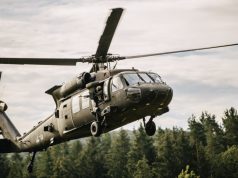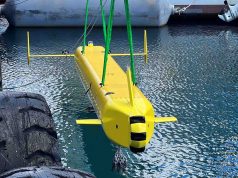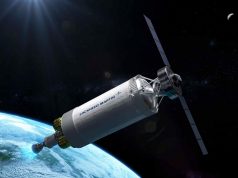Sikorsky and the US Defense Advanced Research Projects Agency (DARPA) achieved a significant milestone recently with a modified S-70 OPV Black Hawk helicopter completing an entire flight without the assistance of a pilot.
The technology that enabled the flight already exists in Sikorsky’s S-70 optionally piloted vehicle (OPV) Black Hawk and the Sikorsky autonomy research aircraft (SARA), a modified S-76B helicopter.
Developed under DARPA’s Aircrew Labor In-cockpit Automation System (ALIAS) and with the support of Sikorsky’s MATRIX technology, pilots can focus on saving lives or transporting cargo instead of the mechanics required for contemporary flight.
This technology was recently tested in a first-of-its-kind mission, demonstrating complete supervised autonomy capabilities on the S-70 OPV Black Hawk – including autonomous take-off, landing and two simulated obstacle avoidance scenarios – all completed with a tablet.
From takeoff to landing, ALIAS and MATRIX left little work to be done by the pilots on board during the test. Accompanied by a safety pilot, Sikorsky’s chief pilot Mark Ward commanded the supervised autonomous mission using only a tablet. The OPV Black Hawk turned and maneuvered its way through the simulated obstacles as they appeared on the tablet screen, Sikorsky said.
“Through the ALIAS program and our unique combination of autonomy software and hardware, we are bringing our customers one step closer to safer and smarter flight,” said Igor Cherepinsky, director of Sikorsky Innovations. “Our end goal is to transition this technology to help address emerging mission requirements, including those outlined in the US Army’s Future Vertical Lift (FVL) program.”
Sikorsky is working with Boeing to secure a contract for the development and delivery of a next-generation vertical transport capability for the US Army under the FVL program, which includes Future Long Range Assault Aircraft (FLRAA) and Future Attack Reconnaissance Aircraft (FARA).
“We designed Raider X and Defiant X to compete in highly complex environments. Our advancements in automation and autonomy will enable aircrews to focus on the mission, not just flying the aircraft,” said Jay Macklin, Business Development Director for Sikorsky Future Vertical Lift.
Raider X is Sikorsky’s offering for the FARA competition, while Defiant X is the proposed solution for the FLRAA program.
Parallel to the US Army competitions, the company’s efforts to develop and transition its pilot-direct autonomy capabilities are running under Phase III of the DARPA ALIAS program through 2022.



























